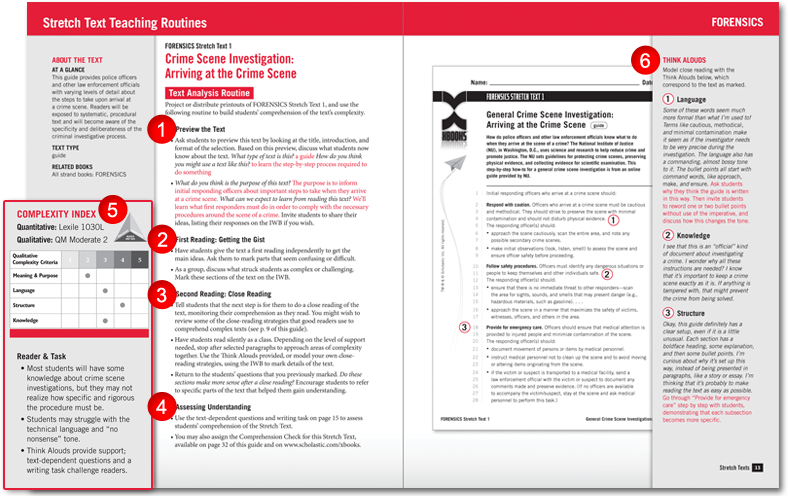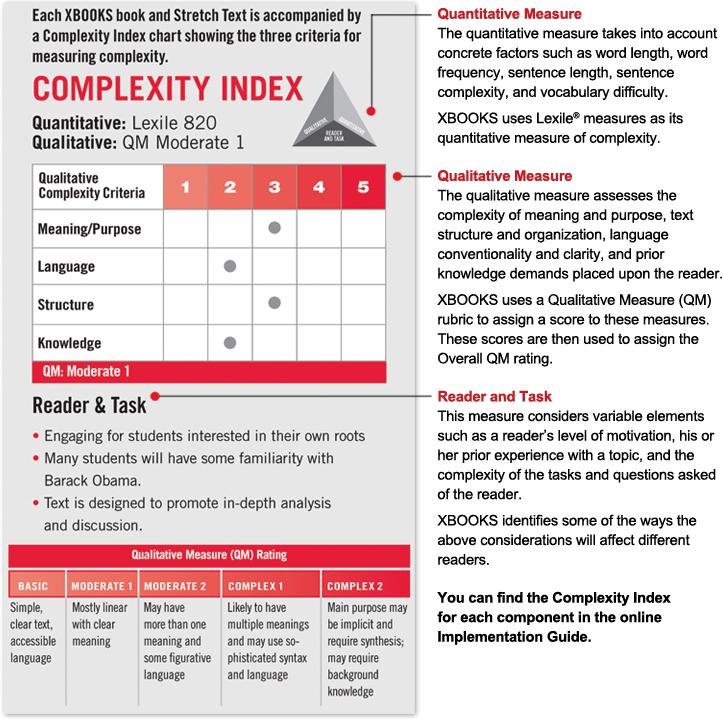Teaching the Stretch Texts
In the Strand Resource Guide for each of the five strands, you will find
a routine and text-dependent questions to scaffold students’ understanding of complex text.
XBOOKS Stretch Texts include articles, speeches, interviews, letters, guides,
and other important informational text types. Each Stretch Text is linked to
the theme of the particular strand, the Lead Book, or a Reader’s Choice Book.
Stretch Texts are available for the interactive whiteboard from the website.
They also can be printed and distributed.

Preview the Text
Students look at the title, introduction, and format. They then take stock of what they know about the text and consider the writer's purpose.
First Reading—Getting the Gist
Independently or with the group, students do an initial independent reading to get the gist, noting areas of difficulty.
Second Reading—Close Reading
Students conduct a close reading of the text, using the techniques of careful readers.
Assessing Understanding
Each routine provides Text-Dependent Questions and a Writing Task to assess understanding.
Think Alouds
These help students with text-based questions and provide models of close-reading strategies.


